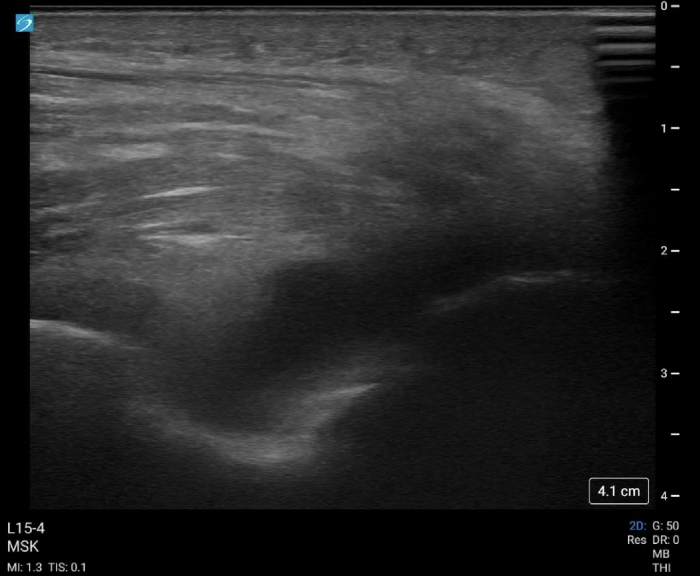
Make an Impact! Writing Your Next Educational Ultrasound #FOAMed Post
Leah Anderson, MD
Emergency Medicine PGY-3, University of Wisconsin-Madison. @leahkanderson22
Hani Kuttab, MD
Assistant Professor; Assistant Ultrasound Director, University of Wisconsin-Madison. @hanikuttab
Open access medical resources have truly transformed the landscape of ultrasound education. Whether you’re a seasoned professional or a new learner just beginning your journey in point-of-care ultrasound (POCUS), the wealth of online content at your fingertips has never been more accessible. Bite-sized Tweetorials, immersive blogs, and unique case reports centered around interesting POCUS images offer quick, focused, and accessible content that easily grabs the attention of your learners!
But, let’s face it: crafting an educational ultrasound post that truly resonates with your audience requires more than just regurgitating clinical data. It’s about connecting with your readers on a deeper level, sparking curiosity, and empowering others to pick up the probe on their next shift. So, how do you ensure your next #POCUSfirst post hits the mark? Here are some key strategies to consider:
1. Meet your target audience
Before crafting, reflect on who your intended audience is: Who are you speaking to? Is your content tailored to faculty, residents, or students? Is your audience internal, or are you trying to reach a broader group online? While it may be tempting to reach a wide variety of readers, it is important to start with a narrow focus. Have a clear ‘brand’. Stay focused. Write to the level of learner you are targeting. For your students or junior residents, keep it simple: highlight unique presentations and interesting pathology (eg, hydronephrosis). For the more advanced audience, do a deeper dive into a more complex topic (eg, measuring the resistive index). Avoid highly technical medical jargon or uncommon abbreviations to ensure you are reaching a wide range of readers. For clarity, include units when highlighting vital signs or lab results. This will help keep learners engaged while deepening medical knowledge. Remember: your post should be meant to educate—not a regurgitation of your medical documentation!
Case #1: “A 65-year-old female with PMH AAA s/p repair, presented with abdominal pain, n/v x2 days. Vital signs are notable for BP 190/100 and SpO2 was 91% on RA. WBC count was 14.0, lactate was 2.1. DDx includes: SBO, gastroenteritis, appendicitis. POCUS was performed and showed an SBO. Surgery was consulted, NGT was placed and the patient was taken to the OR…”
Try instead: “A 65-year-old female with a history of abdominal aortic aneurysm (AAA) repair presented with two days of abdominal pain, nausea, and vomiting. Vital signs were notable for a blood pressure of 190/100 mmHg and oxygen saturation of 91% on room air. White blood cell count was elevated at 14.0 K/uL, and lactic acid was 2.1 mmol/L. A point-of-care ultrasound (POCUS) was performed, demonstrating a small bowel obstruction (Figure 1, 2, etc.) The surgery team was consulted. A nasogastric tube was placed for decompression, and the patient was taken to the operating room…”
2. Always protect the patient
You might be surprised by all that goes into de-identifying patient information for a post. To ensure the protection of the patient's protected health information (PHI), limit the details to include only what is relevant to the case. Familiarize yourself with the list of HIPAA identifiers, including those pertaining to geography and age. Be mindful of the date you are publishing your post in respect to the date of the case occurrence; having a 3-6 month ‘washout’ period, or delay in publishing your post, is recommended. If your institution has a specific social media manager or HIPAA compliance officer, it may be worthwhile to consult with them before publishing your post to an online platform.
It is also imperative to remove all identifiers from the ultrasound image themselves, beyond the medical record number. For example, the date and time of the POCUS study and information about the performing user and the institution where the ultrasound was performed should be removed. Further, did you know that when using the ‘crop’ feature in PowerPoint or Keynote, the original ultrasound clips with the patient information can still be retrieved? Hidden data within the ultrasound image files themselves lives ‘metadata’, which can also be tracked back to the patient. There are numerous editing softwares available; we recommend first running all of your ultrasound clips through the ‘ClipDeidentifier’ tool available on the Core Ultrasound website. This tool allows you to crop multiple clips from the same series at once and removes the hidden ‘metadata’ from the images themselves. The generated cropped images from ClipDeidentifier are generally safe to distribute without exposing the patient’s PHI. Remember– protecting the patient's information is ultimately your responsibility!
Case #2: “A 92-year-old male with a history of alcohol use, gout (last episode in May 2021), hypertension well-controlled with hydrochlorothiazide, presented to the University of Wisconsin ED with right elbow pain and swelling. Ultrasound is shown below:”

Try instead: “An elderly male with a history of alcohol use, gout, and well-controlled hypertension, presented to the emergency department with elbow pain and swelling. Ultrasound is shown below:”
3. Tell a compelling story
Nobody wants to read a multiscreen ‘Tweetorial’ or blog post that is pages long. Remove extraneous information if it does not relate to the case or adds educational value. You may want to disguise elements of the history and physical exam and center the focus on the ultrasound images, allowing your readers to ‘make the diagnosis.’ In other words, don’t make it too obvious! Next, provide multiple images as figures (highlighting different views) or perhaps a figure highlighting ‘normal’ for readers. One additional tool is the Video Mosaic Builder on the Core Ultrasound website, which allows you to combine various clips and images into one image file. Finally, choose high quality images with proper depth, gain, and machine settings, so your learners have the best examples to learn from and reference.
Example #3: “A young male with a history of Marfan’s syndrome and a prior spontaneous pneumothorax presents to the emergency department with acute onset of chest pain and shortness of breath. Vital signs are significant for a blood pressure of 120/90, heart rate of 90 beats per minute, respiratory rate of 16 breaths per minute, and an oxygen saturation of 84% on room air. The patient was placed on 2 liters of supplemental oxygen. Physical exam revealed a tall, thin male in no distress. Cardiac exam was normal. Pulmonary exam revealed absent breath sounds on the left. An ultrasound was obtained…”
Try instead: “A young male presented to the emergency department with chest pain and shortness of breath. Oxygen saturation was 84% on room air. An ultrasound was obtained…”
Lastly, it is often helpful to create and adopt a standardized format, so your readers know what to expect with each post and the end products are consistent. Keep it brief— remember that learners can only learn so much. Summarize the two or three takeaways in bullet points to make it clear to your reader. After capturing your audience, then change it up to keep things fresh. One general format you may follow is:
-
- Introduction: introduce the clinical presentation.
- Figures: include relevant, deidentified ultrasound images (with figure legends).
- Diagnosis: reveal the diagnosis to your readers.
- Discussion: highlight two key takeaways. Depending on your audience, this could include highlighting an ultrasound technique, diagnostic criteria for that diagnosis, or the benefits of POCUS in the practice of emergency medicine.
- References: provide a list of cited literature for those looking to do a ‘deeper dive.’
4. Build your content base
Okay… so, you wrote a post… now what? The pitfall of any online blog or educational platform is going long periods of time without content. This puts your platform at risk of losing its audience. It can be a lot of work to create, write, edit, and sustain an online, educational platform. Start small (eg, posting monthly) and understand that growth happens slowly. Recruit others to help build content. Train a motivated resident or medical student to edit posts and provide them with a title for their CVs. Consider adding a required writing element as a part of your institution’s required ultrasound rotation (providing residents with a template to follow). Energize and motivate learners on-shift, who catch these interesting cases in real-time, to submit the post for online publication (highlighting this to be added to their CVs). Create and distribute ‘swag’ to create buzz and motivate others to submit cases. In addition to building your content base, this also pulls in your learners in. Once you have a small collection of blog posts ready to go, then it’s time to start publishing. With your newfound momentum, put in the work up front: format and publish multiple cases at once, and schedule their release date to ensure your audience has regular, consistent, and up-to-date content.
5. Putting it all together
Creating, writing, and maintaining an educational blog or social media presence is no easy feat. It isn’t just about disseminating information– it’s about sparking a passion for learning and connecting with your audience. Before starting, know who you are speaking to– and carefully reflect on what your goals and bandwidth are. Proper planning is key to ensure that your efforts are sustainable. Ensure careful de-identification of patient information. Recruit a team to help both build and maintain content and provide consistency in your material to keep your audience engaged. The experience can be incredibly worthwhile and meaningful to both you and your learners! Happy scanning!
Leah Anderson is a PGY-2 Emergency Medicine Resident at the University of Wisconsin-Madison. She is also the Assistant Resident Editor for the University of Wisconsin-Madison Department of Emergency Medicine Ultrasound Website, Madtown Sono. She is also the Social Media Lead for Madtown Sono on Twitter (@MadtownSono).


